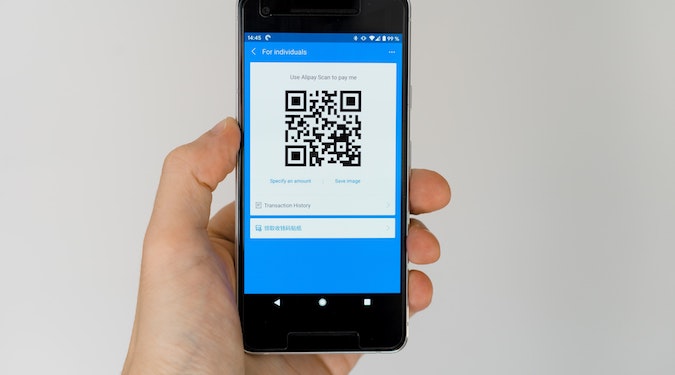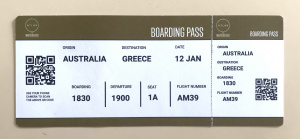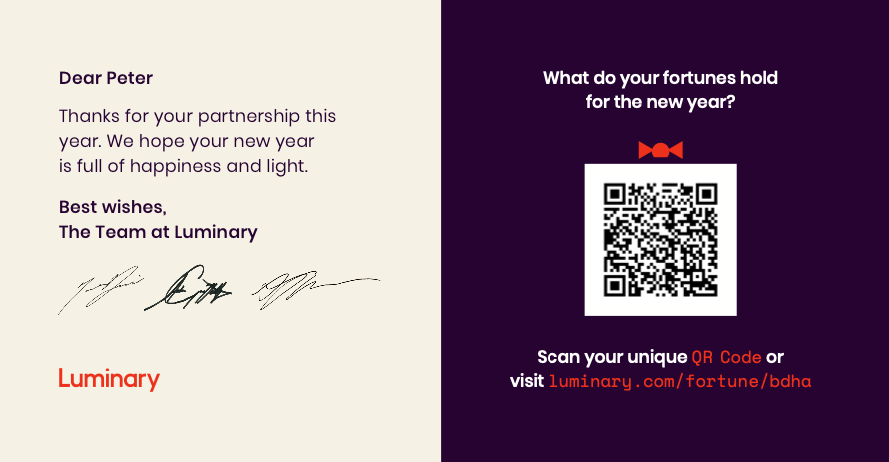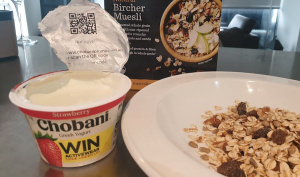The QR code comes of age
Share

QR codes have enjoyed a resurgence thanks to the pandemic. Marty Drill considers the potential that QR codes have for marketers and whether this trend will be here to stay.
The QR code has long promised to be a game changer. However, until now, it’s failed to live up to the hype. The pandemic has provided the QR code’s moment in the sun, as venues needed a fast way to check people in for contract tracing.
The question is, will the QR code fade back into obscurity once the pandemic is over, or has it finally cemented its place in the marketing arsenal?
A reputation overhaul for the QR code
The QR code was invented in 1994 and became popular in Japan in about 2002. However, QR codes never really took off in most countries outside of Asia.
They were clunky to use and required additional software on your phone to read the code. The process to find the app on your phone, load it, sometimes deal with an ad, and then scan the code, just all seemed a bit too long and not worth it.
When you got to the location, it was often the home page of the brand, rather than contextual information that related to why you scanned in the first place. Anyone can type in a short URL, so the QR code app didn’t really save any time.
As coronavirus threatened all of us, it became necessary to find a way to track where people had visited in order to facilitate contact tracing. QR codes answered that need, enabling people to self-register their contact details.
Governments around the world began to mandate the use of QR codes for checking in to stores, facilities and venues. This strategy was designed to make contact tracing teams more efficient.
The days of the clunky QR code that required the user to download additional software are long gone, but many people had already written them off. Before the pandemic, most of us rarely – if ever – used QR codes. With the need to use a QR code to get into everything from cafes and restaurants to yoga classes, people have been re-incentivised to give them another try.
These days, smartphone platform providers have enabled cameras to read QR codes and provide the option of opening the URL. In the context of Coronavirus check-ins, this leads the user to a form on a long URL to complete their details.
The irony is that Apple enabled the camera to read QR codes in June 2017 and Google enabled it on Android soon after. However, on Android you needed to enable it through settings until 2020 when they made it standard as part of the camera.
The ease of scanning a QR code through the camera app means user frustration is reduced and QR codes have now become a natural way to check-in, order or get more information.
Huge potential for marketers
As marketers, we have long been wanting to bridge the gap between the physical world and online. Largely we do this by advertising web addresses on outdoor adverts, brochures and products, and at the point of sale. This relies on the customer taking action at the time and entering the address into their mobile or later remembering the address and having the impetus to visit the address.
The most prominent application for QR codes, outside of grabbing your details at a bar or restaurant, will be in advertising. Being able to add QR codes to adverts can provide the ability to track the effectiveness of an ad. Each ad type or even ad location could have a different QR code.
Historically, different landing pages have provided the ability to focus the attention of the consumer to a URL that relates to the ad. However, the URL is usually long and users often just type in the brand rather than the URL. By allowing them to scan a QR code you can send them directly to the information, get the conversion and attribute the action back to the form of advertising that introduced or reminded them of your product. This is already happening in digital displays in shopping centres and airports.
Providing people with a QR code instead of a URL at the time of interest increases the chances that they will take action. Often advertising can end up being just an exercise in brand awareness, as the intended audience doesn’t take any action. The fact that a person can see something that interests them and take instant action with the QR code increases the likelihood of conversion and solves the advertising attribution issue.
Product packaging will become the next major frontier for QR codes. Any time you can provide more information to a potential customer about the merits of a product, its quality or how it’s made generally reinforces the buying decision.
At the very least, consumers are engaging with your product instead of someone else’s. Imagine you are the Marketing Manager of Cadbury and you want to promote the merits of your traceable supply chain for cocoa. In-store or on the couch, people can watch a video showing where the beans are sourced from, and how the chocolate’s made (in Tassie), and can even hear from Beryl who made it. They may have purchased the chocolate (shoes, dress or champagne) anyway, but you have improved their experience and made them feel better about their purchase.
You can put a QR code on anything where someone might require more information or make a submission or purchase. While often this situation is in a retail environment, QR codes will play a much larger role in marketing.
Other possible QR code applications could include:
- If you have a waiting area, you could provide clients or consumers with a way to access your brand story while they wait
- Stockists could scan a box when a stock line runs out allowing them to reorder
- FMCGs could provide tips from a well-known chef on how to cook a recipe or detailed information about the ingredients in a product
- Venues could provide ‘What’s on’ guides at reception
- Exhibitors at trade shows could provide more information about a product or company.
Melbourne restaurant Atlas Dining started bringing world cuisines into home kitchens last year through the Atlas Masterclass. Home chefs receive a ‘boarding pass’ with their box of ingredients that takes them to the recipes and step-by-step tutorial videos from Atlas Head Chef Charlie Carrington.
Luminary’s 2018 Christmas campaign invited recipients to scan a personalised QR code to have their fortune told for the year ahead.
Chobani’s latest campaign includes a QR code to enter a competition to win activewear.
QR codes have long had many possibilities. They now have an audience who can use them easily and who see them as normal. This has opened up a really exciting world of opportunities for brands, and my prediction is that we will see widespread adoption of QR codes across many marketing plans in 2021.
Marty Drill is the CEO of Luminary.
Photo by Markus Winkler on Unsplash.


















